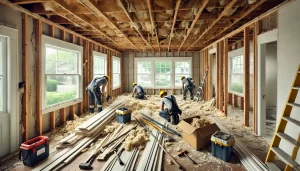Connecticut, known for its rich history and picturesque landscapes, is experiencing a remarkable surge in commercial construction. The state’s strategic location, robust economy, and supportive business environment have contributed to a flourishing real estate market and a vibrant construction industry. In this blog post, we will delve into the trends and insights behind Connecticut’s construction industry, exploring key factors driving growth and highlighting notable developments.
Economic Factors Driving Growth
The rapid expansion of Connecticut’s commercial construction industry can be attributed to several economic factors. Firstly, the state’s proximity to major metropolitan areas, such as New York City and Boston, makes it an attractive location for businesses seeking to establish a presence in the Northeast. Connecticut’s well-developed transportation infrastructure, including major highways and rail connections, further enhances its accessibility and connectivity.
Secondly, Connecticut boasts a diverse and robust economy, with industries ranging from financial services and healthcare to advanced manufacturing and technology. This economic diversity creates a steady demand for commercial space, prompting developers to invest in new construction projects to meet the needs of expanding businesses.
Revitalization and Adaptive Reuse
Connecticut has witnessed a significant trend towards revitalization and adaptive reuse in commercial construction. Historic buildings and underutilized spaces are being transformed into modern, vibrant commercial hubs. This approach not only preserves the state’s architectural heritage but also offers unique opportunities for businesses seeking distinctive locations with character and charm.
Cities such as Hartford, New Haven, and Stamford have seen successful revitalization efforts, repurposing old factories, warehouses, and office buildings into mixed-use developments, including restaurants, retail spaces, and creative workspaces. Adaptive reuse projects not only contribute to the revitalization of urban areas but also promote sustainable development by reducing the need for new construction.
Sustainable and Energy-Efficient Construction
Connecticut is at the forefront of sustainable and energy-efficient construction practices. With a strong commitment to environmental stewardship, the state has implemented regulations and incentives to encourage green building initiatives. Commercial developers are increasingly incorporating sustainable features, such as energy-efficient HVAC systems, solar panels, green roofs, and water conservation measures, into their jobs.
The adoption of sustainable construction practices not only reduces the environmental impact but also offers long-term cost savings for building owners and occupants. Connecticut’s commercial construction industry is, therefore, aligned with the state’s broader sustainability goals and contributes to a greener and more resilient built environment.
Focus on Mixed-Use Developments
Mixed-use developments have gained prominence in Connecticut’s commercial construction landscape. These jobs integrate residential, commercial, and recreational spaces within a single development, creating vibrant communities and enhancing live-work-play dynamics. Mixed-use developments offer convenience for more people, reduce commuting times for workers, and foster a sense of community, attracting both companies and residents.
Cities like Stamford and New Haven have witnessed the successful implementation of mixed-use developments, with a blend of retail, office spaces, and residential units. The combination of amenities, walkability, and proximity to public transportation makes these developments highly sought after by both developers and tenants.
Technological Advancements and Design Innovations
Commercial construction in Connecticut is also fueled by technological advancements and design innovations. Building Information Modeling (BIM), virtual reality, and drone technology are revolutionizing the construction process, enhancing collaboration, improving efficiency, and reducing costs. These advancements enable developers and architects to visualize and optimize designs, identify potential issues before construction begins, communicate with contractors and streamline project management.
In terms of design, contemporary commercial buildings in Connecticut prioritize open and flexible layouts, ample natural light, and sustainable materials. The focus is on creating modern workspaces that promote productivity, collaboration, and employee well-being.
Call Bella Contracting Services for your next commercial construction project
The amount of construction in Connecticut is an exciting testament to the state’s thriving economy, strategic location, and commitment to sustainable. For your next Connecticut commercial construction project, call Bella Contracting Services today!










